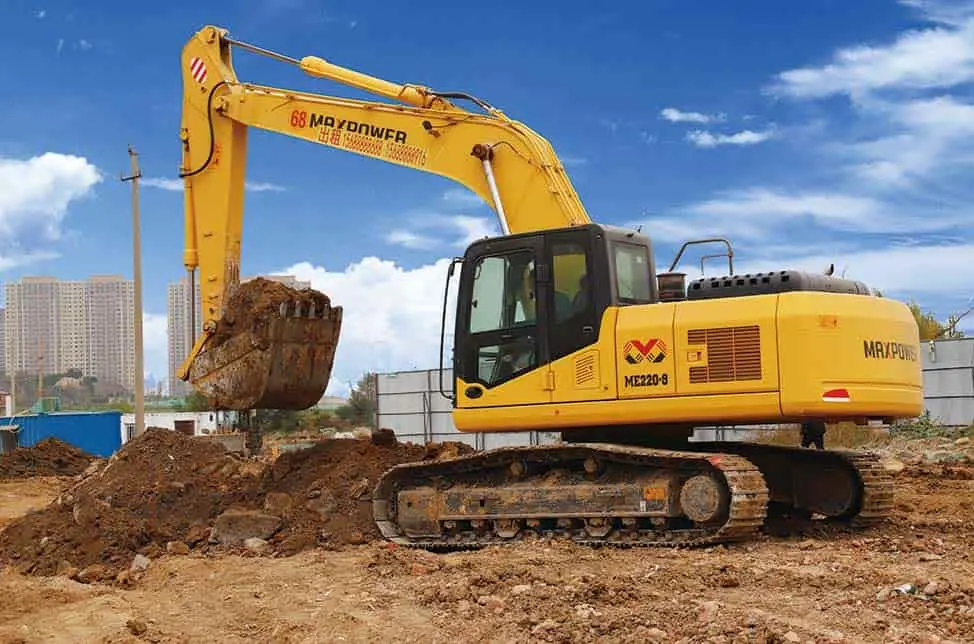Introduction
When it comes to excavation work, selecting the right excavator size is crucial. The size of the excavator determines its digging depth, reach, and lifting capacity, which in turn affects the project’s productivity and cost. Understanding the different excavator sizes and their applications can help construction professionals make informed decisions.
Types of Excavator Sizes

Excavators come in various sizes, each designed for specific tasks. The main categories of excavator sizes are:
Mini Excavators: These are compact and versatile, suitable for small-scale projects and tight spaces.
Medium Excavators: They offer a balance between size and power, making them ideal for a wide range of applications.
Large Excavators: These are powerful machines designed for heavy-duty tasks and large-scale projects.
Extra Large Excavators: They are the largest and most powerful excavators, used for massive excavation projects.
Table 1: Excavator Sizes Categories and Applications
| Size Category | Weight Range (tons) | Typical Applications |
|---|---|---|
| Mini | Up to 1.5 | Landscaping, small construction projects |
| Medium | 1.5 to 30 | General construction, road work |
| Large | 30 to 100 | Large-scale construction, mining |
| Extra Large | Over 100 | Massive excavation projects, heavy-duty mining |
Factors to Consider When Choosing Excavator Sizes
Several factors should be considered when selecting the right excavator size for a construction project:
Project Scope: The size and complexity of the project will influence the choice of excavator size.
Working Space: The available space on the construction site will determine the maximum size of the excavator that can be used.
Ground Conditions: The type of soil and ground conditions will affect the excavator’s stability and performance.
Lifting Capacity: The weight of materials to be moved will determine the required lifting capacity of the excavator.
Cost: Larger excavators are more expensive to operate and maintain, so cost should be a consideration.
Benefits of Choosing the Right Excavator Sizes
Selecting the right excavator size can bring several benefits to a construction project:
Improved Productivity: An appropriately sized excavator can work more efficiently, leading to faster project completion times.
Reduced Costs: Using an excavator that is too large or too small for the job can increase costs. Choosing the right size can help minimize expenses.
Enhanced Safety: An excavator that is well-suited to the job can reduce the risk of accidents and improve safety on the construction site.
Better Project Outcomes: The right excavator size can contribute to a higher quality of work and better overall project outcomes.
Table 2: Benefits of Choosing the Right Excavator Sizes
| Benefit | Description |
|---|---|
| Improved Productivity | Efficient use of an appropriately sized excavator can speed up project timelines. |
| Reduced Costs | Avoids unnecessary expenses associated with using an oversized or undersized excavator. |
| Enhanced Safety | Properly sized excavators reduce the risk of accidents and improve site safety. |
| Better Project Outcomes | High-quality work and improved project results due to efficient excavation processes. |
Common Excavator Size Selection Mistakes

It’s essential to avoid common mistakes when selecting excavator sizes:
Underestimating the Project Requirements: Failing to accurately assess the project’s needs can lead to choosing an excavator that is too small.This can result in delays, increased costs, and potential damage to the equipment. It is crucial to carefully evaluate the requirements of the project and select the appropriate excavator to ensure smooth operations and successful completion.
Overlooking Ground Conditions: Ignoring the type of soil and ground conditions can result in an excavator that is not suitable for the job.This can lead to inefficiencies, delays, and potentially dangerous situations on the worksite. It is crucial to carefully assess the soil and ground conditions to ensure that the excavator chosen is capable of performing the necessary tasks effectively and safely. By taking the time to consider these factors, you can avoid costly mistakes and keep the project running smoothly.
Focusing Only on Cost: While cost is a factor, it should not be the sole consideration when choosing an excavator size.Other important factors to consider include the specific job requirements, site conditions, and operator experience. Choosing the right excavator size for the job can improve efficiency, productivity, and overall project success. It is essential to evaluate all relevant factors before making a decision to ensure that the excavator size meets the needs of the project effectively.
Conclusion: Excavator Sizes
Choosing the right excavator size is a critical decision that can significantly impact the success of a construction project. By considering factors such as project scope, working space, ground conditions, lifting capacity, and cost, construction professionals can select the most appropriate excavator size. The benefits of making the right choice include improved productivity, reduced costs, enhanced safety, and better project outcomes. Avoiding common mistakes and understanding the advantages of selecting the right excavator size can lead to more efficient and successful construction projects.
FAQ
Q: What is the smallest excavator size available?
A: The smallest excavator size is typically the mini excavator, which can weigh up to 1.5 tons.
Q: Can large excavators be used in tight spaces?
A: Large excavators are not suitable for tight spaces due to their size and maneuverability limitations.
Q: How does the lifting capacity of an excavator affect its size?
A: The lifting capacity of an excavator is directly related to its size. Larger excavators generally have a higher lifting capacity.
Q: What is the most important factor to consider when choosing an excavator size?
A: The most important factor is the project’s scope and requirements, as it determines the necessary capabilities and specifications of the excavator.







-150x150.webp)
